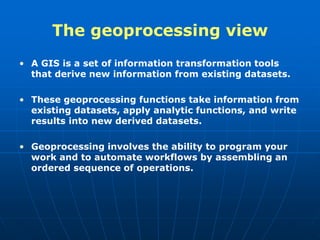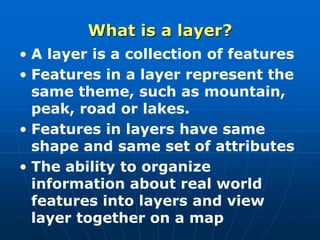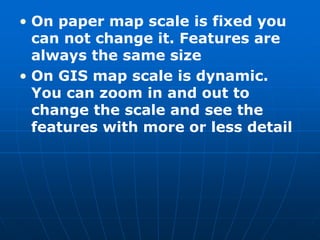This document discusses the key functions of a geographic information system (GIS). It explains that a GIS allows users to capture, store, query, analyze, display and output geographic data. It describes the vector and raster data models used to store spatial data. The document also outlines the three main views of a GIS - the geovisualization view which includes maps, the geodata view which is the spatial database, and the geoprocessing view which involves tools to transform and derive new information from existing datasets. Finally, it discusses some key concepts for GIS maps including layers, features, attributes, and scale.




































